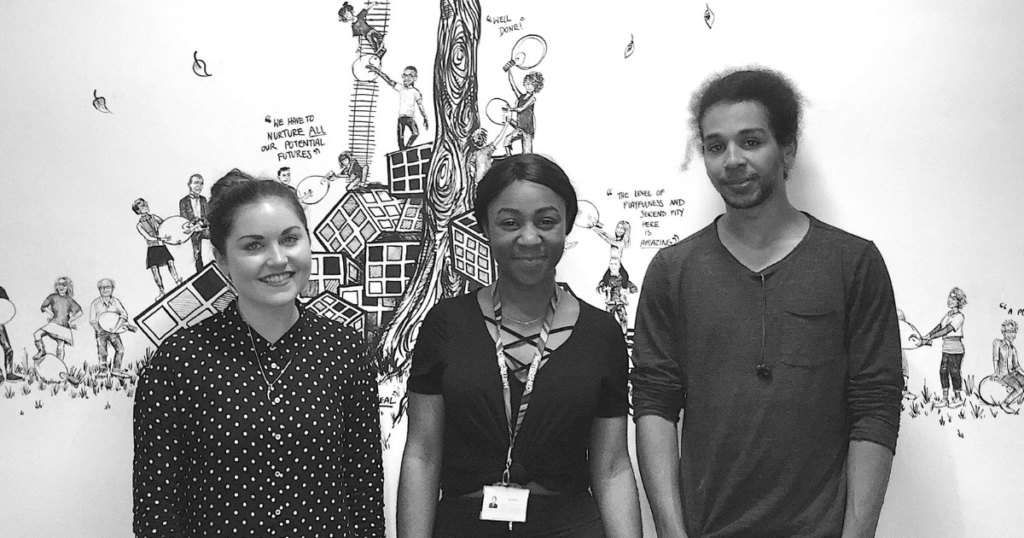What’s it like to be a remote worker?
One day in the life of a remote worker might start with a stand-up meeting via instant messages or a video call, or perhaps with some asynchronous team updates. It might involve a walk or commute to a local coffee shop, library or co-working space, with some casual networking with workers from other organisations. It could even involve travelling further afield, to a conference or team get together at some location around the globe.
A remote worker’s first task could range from checking their emails in their pyjamas to deep diving into a complex project. Or the day might not start with work at all, depending on the flexibility of their employer’s policies. Perhaps the day starts with another activity, whether that involves exercise or the school run or something totally relaxing, it doesn’t matter. The point is, when it comes to remote work, we see a wider range of routines and working patterns compared with the traditional office worker’s day.
One of the biggest benefits of remote work is that it allows team members to enjoy increased autonomy and flexibility to work in the way that suits them best.
That’s not to say there aren’t some challenges too. Remote workers need to learn new ways to collaborate, share resources and improve communication, whilst staying on track with personal tasks and maintaining progress towards team goals.
Here are 5 challenges to be aware of, partnered with suggested solutions to help you win at remote working:
1. Challenge: Real time collaboration
In some instances, being physically apart from your work colleagues can cause a feeling separation in terms of the projects you work on too. Working together in real time is an interesting solution to this, particularly when you use a shared work space that allows you to collaborate visually.
Solution: Work together in real time, even when you are working apart
Whilst working on a shared mind map using Mind Map Pro, you can see real time updates on your screen. Being able to see how multiple collaborators are contributing to a group project does wonders for unifying a team.
Mind Map Pro shows updates to your shared mind map as they happen. You see when a team member adds or edits an idea, meaning you can watch and collaborate with your team visually. It’s the digital way to bounce ideas off each other.
2. Challenge: Asynchronous working
In reality, team members can’t always work together in real time. This could be due to flexible working patterns or due to colleagues working across different timezones.
Solution: Flexible communication channels and individual decision making
Asynchronous communication happens when discussions between two or more team members does not occur at the same time, so information is shared by one person at a time when another person may not be working. The flexibility of switching between live and asynchronous discussions means that teams know it’s okay to work different hours.
This also means that remote team members have the opportunity to embrace individual leadership and make key decisions, which may have been handled by a colleague or manager in a synchronous environment. Encouraging autonomy is a useful strategy for helping teams stay effective.
Using Mind Map Pro, you’ll find chat threads within each idea in a mind map, allowing asynchronous discussions that are easy to keep track of. With pinned comments, keyword search and the ability to view all comments in all threads too, it’s easy to stay on top of discussions, whether they happen whilst you are working or not.
3. Challenge: Regular file sharing
It’s rare that you’ll deal with documents without needing to share them with a collaborator at some point, so for both remote workers and office workers, file sharing is an important part of working life. That said, it’s easy to muddle up the latest versions and lose track when sharing docs through multiple email threads.
Solution: Keep resources within reach
While there are some excellent file sharing options available, such as Dropbox and Google Drive, you can also upload your file to your mind map to keep it easily accessible for all team members. By aligning your file with a particular idea, you increase clarity for all people involved in the project because it’s quick and easy to find and download the files connected with any particular topic.
You can make things even easier by using Mind Map Pro as the main workspace, utilising the features for including notes, images, graphs and data tables. You’ll find there is less need to store external files because active work can be integrated into the mind map and then exported into an Office document at a later date.
4. Challenge: Task management
Often, remote working means juggling your own workload and taking responsibility for staying on track. When everyone manages their own tasks, it’s hard to know who is free to collaborate or discuss a project, or what recent experience a team member could offer to help you problem solve.
Solution: Visually manage tasks using a team agile board
Managing tasks with an agile board helps remote teams stay on track, improves transparency when it comes to workloads and helps align team members towards a unified goal.
Mind Map Pro’s agile task manager extension will be released later this Spring, so watch out for it in the next major release. It helps to visually display the progress and workloads for individuals, as well as the whole team. Each task links to an idea in the mind map and can be assigned to a team member, then you can drag and drop the task between progress points, from the backlog through to completion.
5. Challenge: Goal setting
Setting major targets and goals is more complicated when teams work remotely. Without the daily, face-to-face interaction, teams risk losing the opportunity to align motivations towards a unified goal.
Solution: Chop your wider goals into smaller sprints
Focus on setting steps for your wider goals and targets using sprints, limiting it to a specific time period, such as a two-week sprint. This helps keep each team member on track and feeling motivated to achieve their goal by the end of the sprint.
Being held accountable for goals and sharing updates on each other’s progress increases motivation for teams to reach their targets. The agile board also has the option for setting team sprints with due dates, so there is less chance that a task can slip through the net and catch up with an individual just before a deadline. The whole team works together to finish the sprint, feeling unified.
Mind Map Pro supports and practises flexible working, and Paul Seed, CEO of Mind Map Pro said:
“It was important for us to create a high quality tool for remote working because our team works flexibly and from a variety of locations. Flexibility of when and where to work makes sense for teams who have no real need to be physically present. We want to help improve the ease of flexible working, because we see the benefits first hand.”
Find out what the upcoming agile task manager extension will look like in our blog on small steps to productivity.



